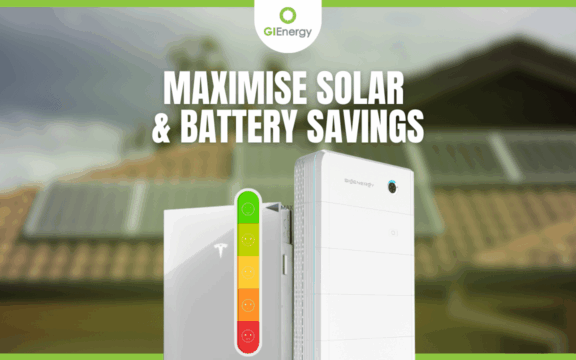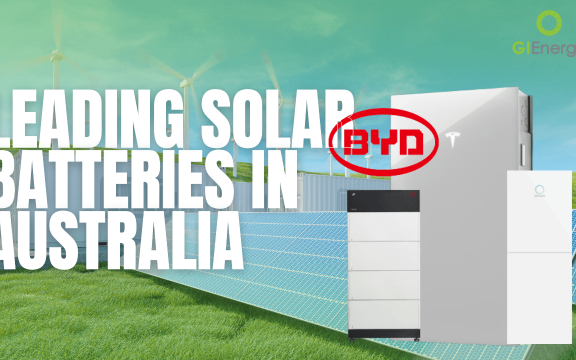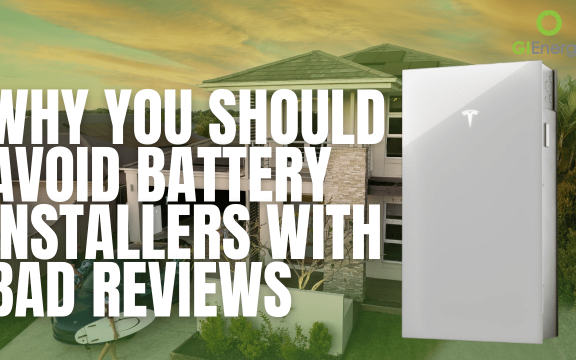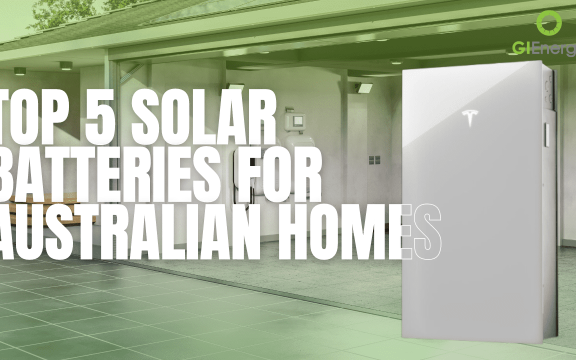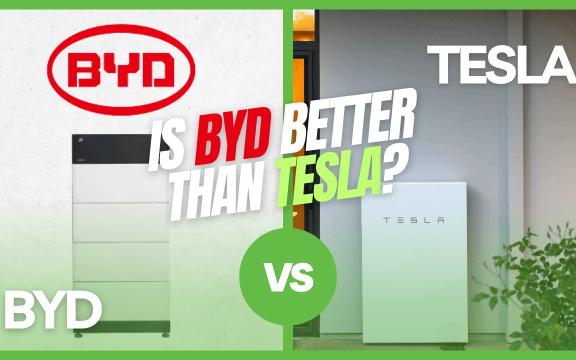A Comprehensive Guide to Tesla Powerwall 3: The Future of Home Energy Storage
In an age where energy efficiency and sustainability are more important than ever, the introduction of the Tesla Powerwall 3 marks a significant milestone for homeowners and businesses alike. At GI Energy, we are excited to be part of this transformative journey, as this next iteration in Tesla’s home energy storage line offers advanced features that improve usability, efficiency, and cost savings for Australians.
This blog provides a detailed look into the Tesla Powerwall 3, which became available for new installations in late 2024. We’ll explore its key features, improvements over previous models, and ideal use cases to help you determine whether it’s the right solution for your energy needs.
Key Features of Tesla Powerwall 3
One of the most exciting updates with the Tesla Powerwall 3 is its integrated inverter and battery. Unlike the previous versions, where you would need a separate inverter for your solar panels and battery, the Powerwall 3 combines these into one efficient unit. This change reduces installation time and the amount of equipment required, making it a more streamlined solution for homeowners. As Matt from GI Energy states, “The unit is actually a built-in inverter and battery all in one now, so we’re removing the need for a string inverter and an AC-coupled battery.”
The integrated inverter features three MPPTs (Maximum Power Point Trackers), allowing users to install up to 20 kW of solar panels on their roof. This capability is particularly advantageous during winter months or periods of poor weather when solar generation tends to be lower. The increased capacity means more energy can be harvested throughout the day, leading to less reliance on the battery during early morning or late afternoon periods when energy consumption typically spikes. Matt adds, “This allows for a lot more capacity there for charging the battery through winter periods and poor weather, improving your solar generation.”
Tesla Powerwall 3 Vs. Tesla Powerwall 2
Additionally, the discharge rate of the Tesla Powerwall 3 has been significantly improved, offering a peak discharge of 11.04 kW. This makes it an ideal solution for homes with power-hungry appliances like air conditioners or electric vehicle chargers. The increased discharge rate allows users to avoid peak demand tariffs, which are becoming increasingly common in Australia. “The discharge rate has been vastly improved, so if you’ve got some really power-hungry appliances, a lot more of that power can now be covered continuously,” says Matt.
With a usable capacity of 14 kWh, the Tesla Powerwall 3 surpasses its predecessor, the Powerwall 2, which offered 13.2 kWh of usable power. This improvement provides users with a little extra energy storage, which can be crucial for high-energy households. Plus, for larger homes, it’s possible to install multiple Powerwall 3 units to cover all energy needs.
Advantages of Tesla Powerwall 3
-
All-in-one unit: By combining the inverter and battery into one unit, the Tesla Powerwall 3 simplifies the installation process, requiring less space and equipment.
-
Higher energy capacity: The 14 kWh of usable capacity allows for greater energy storage and more power during outages or high-demand periods.
-
Increased discharge rate: The 11.04 kW peak discharge rate can handle larger appliances, making the Powerwall 3 a more versatile solution for households with high energy demands.
-
Future-proof technology: As energy tariffs change and demand for sustainable solutions rises, the Powerwall 3 offers future-proofing with its ability to be AC-coupled to existing solar setups and scaled with additional units.
-
Sleek design: With a marginally different size and a new logo, the Powerwall 3 offers a modern look that homeowners can be proud to display.
Limitations of Tesla Powerwall 3
While the Tesla Powerwall 3 offers numerous benefits, there are scenarios where it may not be the most suitable solution, particularly for homes with three-phase power systems. While it can be installed in a three-phase home, its backup capabilities are limited to single-phase operation. In the event of a power outage, the Powerwall 3 can only back up essential appliances like lights, power points, and Wi-Fi on one phase of the home. “The backup capabilities are still single-phase, so if the power goes down, we can wire in one phase of the home,” explains Matt.
This limitation can be a drawback for homes that rely heavily on large three-phase appliances such as air conditioners or electric vehicle chargers. During an outage, the Powerwall 3 will not be able to power these appliances, which can lead to inconvenience and interruptions in daily life. Additionally, the system’s black start capabilities are limited to single-phase homes, meaning it cannot generate solar energy during a blackout in three-phase homes. Matt notes, “It will also black start on single-phase, so if the power goes down and it’s a clear day at midday on a three-phase home, the system cannot generate solar energy like it can in a single-phase solution.”
Alternative Solutions for Three-Phase Homes
For homeowners with three-phase power, GI Energy often recommends the BYD Fronius solution. This true three-phase backup system can generate solar energy even during a power outage and offers whole-home backup capabilities. With a modular design, the BYD Fronius solution allows users to start with a smaller storage capacity and add more modules as their energy needs grow. This flexibility makes it a popular option for those who want a more robust backup system for their home. “For three-phase homes, the Fronius BYD solution can black start, generate solar when the power’s out, and provide a full home backup,” says Matt.
Is Tesla Powerwall 3 Right for You?
The Tesla Powerwall 3 is an excellent choice for homeowners looking for a reliable, efficient, and future-proof energy storage solution. Its all-in-one design, higher capacity, and faster discharge rate make it ideal for homes with significant energy demands, such as those with electric vehicle chargers or large air conditioning units. However, it’s essential to consider the limitations of the system, particularly for those with three-phase power setups.
At GI Energy, we understand that every home is unique, and choosing the right energy storage solution can be challenging. That’s why we always recommend discussing your options with a professional who understands the industry and your specific energy needs. Whether you’re looking to install a Tesla Powerwall 3 or explore alternative solutions like the BYD Fronius system, our team is here to guide you every step of the way.
Conclusion
As one of Australia’s best-reviewed solar energy providers, GI Energy is proud to offer cutting-edge products like the Tesla Powerwall 3. This next-generation energy storage system provides a smart, efficient, and reliable solution for homeowners looking to reduce their reliance on the grid and lower their energy costs. If you’re ready to take control of your home’s energy future, contact us today to learn more about how the Powerwall 3 can work for you.
Recommendation:


